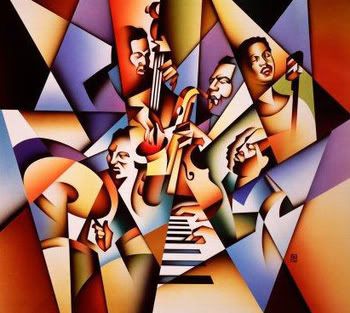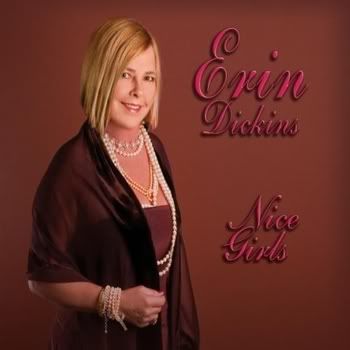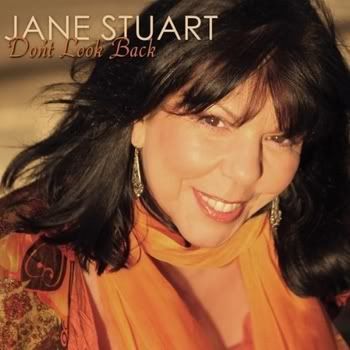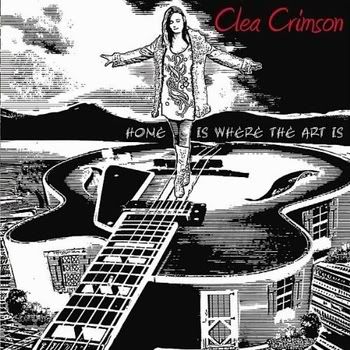
Jazz may be thought of as a musical nation. Within it are states, each covered by the same national laws, but also displaying regional differences. The common history goes back before the swing era, but swing is a good reference point for the current set of songs. The nation of jazz has visitors; some only drop in, and then return to their native lands; but others stay and make this nation their new home. At a given point in an artist’s career, it can be impossible to tell who is a tourist and who is an immigrant. Some of the immigrants form little enclaves, where the accent from their previous home never quite fades away. All of this is to the good; it keeps the national language of jazz rich and diverse. Here then is a mix of natives, immigrants, and tourists in the land of jazz. I’m not entirely sure who is who in all cases, but all have worthy contributions to make.

Erin Dickins: Tain‘t What You Do
[purchase]
It’s hard to believe that Nice Girls is Erin Dickins’ first album in her own name. She was a founding member of Manhattan Transfer almost forty years ago. Since then, she has worked with a diverse group of artists, including James Taylor, Talking Heads, and Jaco Pastorius. But this album makes clear that the jazz of the swing era has always called out to her. The songs on Nice Girls have some touches from later jazz: an accordion here, a cello there. But Tain’t What You Do is a straight ahead track, and Dickins hits it perfectly. The band makes a big sound, But Dickins sings in a natural unforced way, and she more than holds her own. Dickins also has a tight sense of rhythm that really helps put this one over.

Jane Stuart: Eleanor Rigby
[purchase]
Jane Stuart’s album Don’t Look Back opens with the song I Just Found Out About Love. Oddly enough, so does Erin Dickins’. But they are two very different singers. Stuart has a soulful voice, with the kind of gospel shadings that bring to mind the classic R & B singers. But Stuart is certainly singing jazz. She plays with time, stretching or compressing notes and phrases to enhance the emotionality of her vocals. Stuart’s take on Eleanor Rigby is a perfect example of this. She starts out pretty much on the beat, but then she starts getting ahead or behind it. You can tell that this is no accident. She makes “all the lonely people” really come alive for the listener. Her voice intertwines with the guitar part here, and really makes this Eleanor Rigby a thing of beauty.

Patty Ascher: Sunrise
[purchase]
I’m not sure how Patty Ascher is a Brazilian name, but that’s where she’s from. Brazil is one of those enclaves I mentioned in my introduction. On Sunrise, we hear Ascher’s gifts as a singer in a spare setting. The band sets up a rhythm that rocks back and forth, and so do Ascher’s vocals when she joins in. The use of both electric and acoustic guitar, plus the sensual purr of Ascher’s voice, give this one all the sunshine you could want. Elsewhere on the album, Ascher and her band are joined by a large-sounding string section. Sunrise shows me that Ascher does not need this help. Put her voice with this small combo, and she has all she needs.

Clea Crimson: Creepily Addicted
[purchase]
Clea Crimson may be a visitor or an immigrant to the land of jazz; it’s too soon to tell. She has a voice with more than a hint of playfulness in it, and she shows on her album that she knows how to use this voice equally well in a pop or jazz setting. The album closes with a stunning jazz-gospel performance on a song called Sing to Me Darlin’. But Creepily Addicted is just too much fun not to post. Crimson’s playfulness is on full display here, and this song needs it to work. The lyric could be frightening if it were song too seriously, but Crimson is clearly winking at us, and it makes this song a delight. Also, Crimson shows that she really knows how to swing.

Alexi Kaye: Summerstorm
[contact Alexi Kaye directly for purchase information]
Alexi Kaye tends to sound more like a jazz artist when she plays piano, while her songs on the guitar are more rock or folk influenced. On Summerstorm, we are in bebop territory. Drums, bass, and piano pull the rhythm one way, while the saxophone tugs in another. Finally, Kaye’s extraordinary voice comes in, choosing a middle ground rhythmically that binds the whole thing together. Kaye sings in a rich low alto, and her voice has an amazing quiet power. Even when the music is loud, as it is here, nothing overpowers her. Summerstorm is just one of the wonderful surprises on this album. I can’t wait to see where Alexi Kaye’s music takes her next.






0 comments:
Post a Comment